As an Amazon Associate, I may earn a small commission from qualifying purchases made on Amazon.com
Notice or smell black mold in your bathroom? There are ways you can get rid of it and prevent it from coming back.
Let’s start with this classic joke: What gets wetter the more it dries? Are you ready for it? A towel!
This joke isn’t only funny, it’s the truth! And where do we find most of the towels? Unless you own a carwash, the answer is likely the bathroom.
In its liquid form, water flows through pipes, toilets, sinks, tubs, and showers. In its steam form, tiny droplets of hot water float in the air landing and breaking on surfaces made of all sorts of materials like tile, grout, wood, silicone, drywall, and others.
This water, to tiny airborne mold spores that are already in your home, is like blood to a mosquito or cheese to a mouse – leave it there too long, and you don’t stand a chance.
Read on to learn how to enjoy your hot, steamy showers without causing a mold problem that can quickly spread throughout your bathroom and home and wreak havoc on your health.
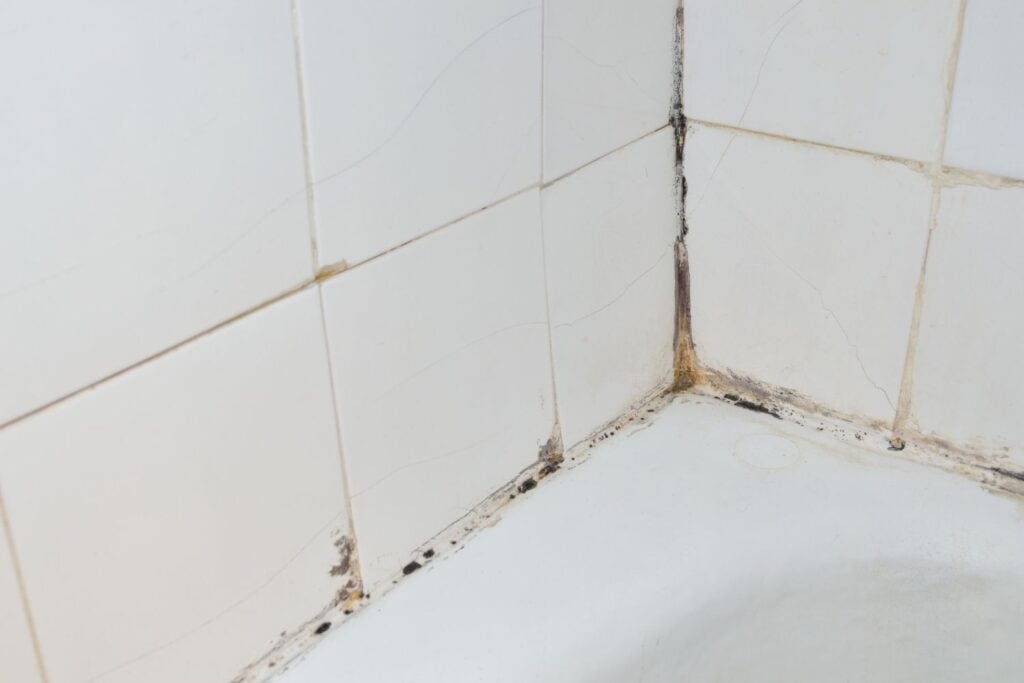
What! Airborne Mold Spores in My Home?
Whether your home is brand new or 100 years old, there are tiny airborne mold spores in your home. Multiple studies estimate that molds and other fungi make-up 25 percent of the earth’s biomass.
To reproduce, molds release spores, which spread through the air, hence airborne mold. Our bodies are generally accustomed to the airborne mold levels and types in our surrounding outdoor environment. Indoor mold levels are considered unhealthy if either or both of these conditions are present:
- Airborne mold levels indoors are higher than average outdoor levels in the surrounding area.
- The types of mold found inside your home are varieties not commonly found outdoors. These mold types are considered “marker spores” and are generally the types of mold referred to as “black mold” or “toxic mold.”
Why Does Mold Grow in My Bathroom?
Mold is a fungus that grows best in moist areas, especially on cellulose-rich materials like drywall, bathroom rugs, bath sponges, etc.
Mold is also commonly seen on shower and tub caulking and painted surfaces because of the moisture that’s so frequently present.
Here are four common causes of black mold in your bathroom:
- Humidity levels exceeding 60% and remaining there for too long
- Little to no bathroom ventilation needed to reduce humidity
- Water leaks from faulty toilet seals, broken or loose water, and drain pipes
- Towels, rugs, or other materials left damp for too long
Common Signs of Bathroom Mold Growth
The best way to identify a mold problem in a bathroom is with a professional inspection so that an objective diagnosis can be made.
Before a formal inspection, it’s good to watch for obvious signs of mold in your bathroom, which typically consist of what you can SEE, SMELL, and FEEL.
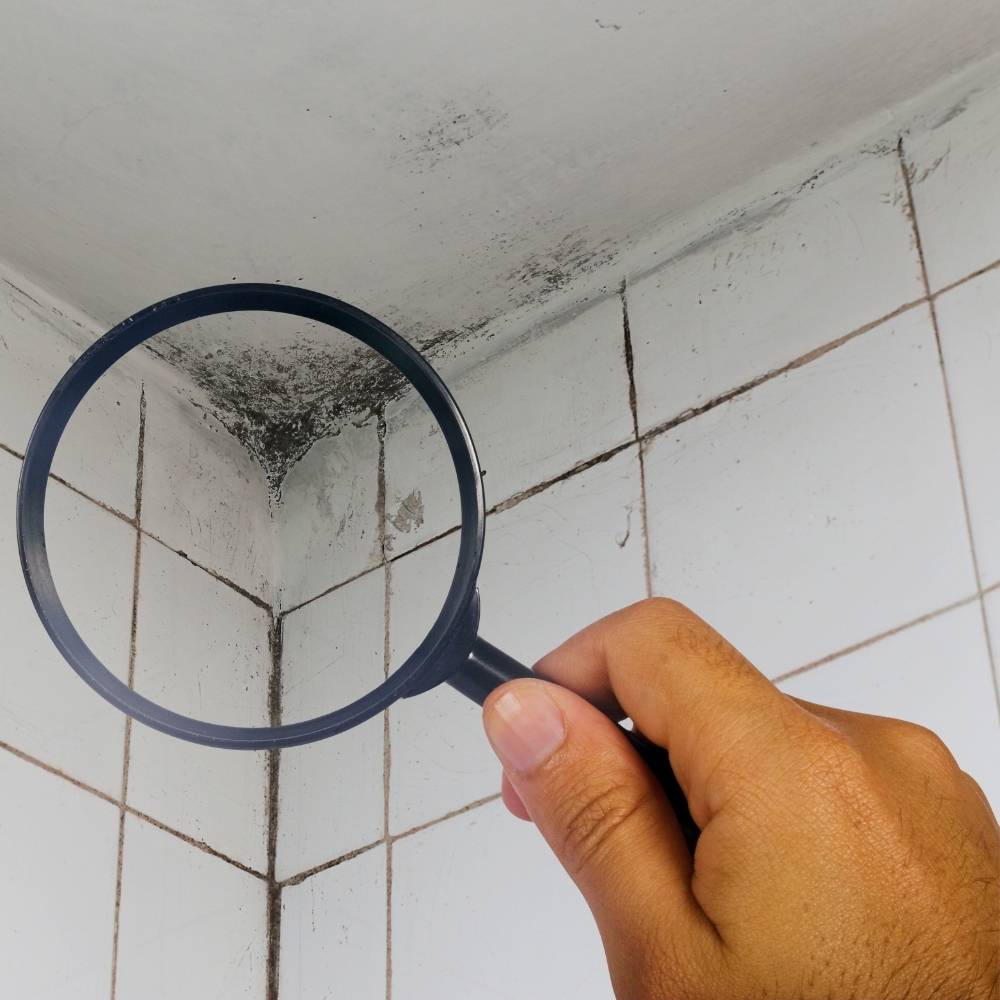
If you can see something that looks like mold, possibly with a greenish-blackish semi-uniform growth, you likely have a mold problem.
Keep in mind that what you can see is likely just a small part of your problem (remember what you learned about airborne mold earlier in this article).
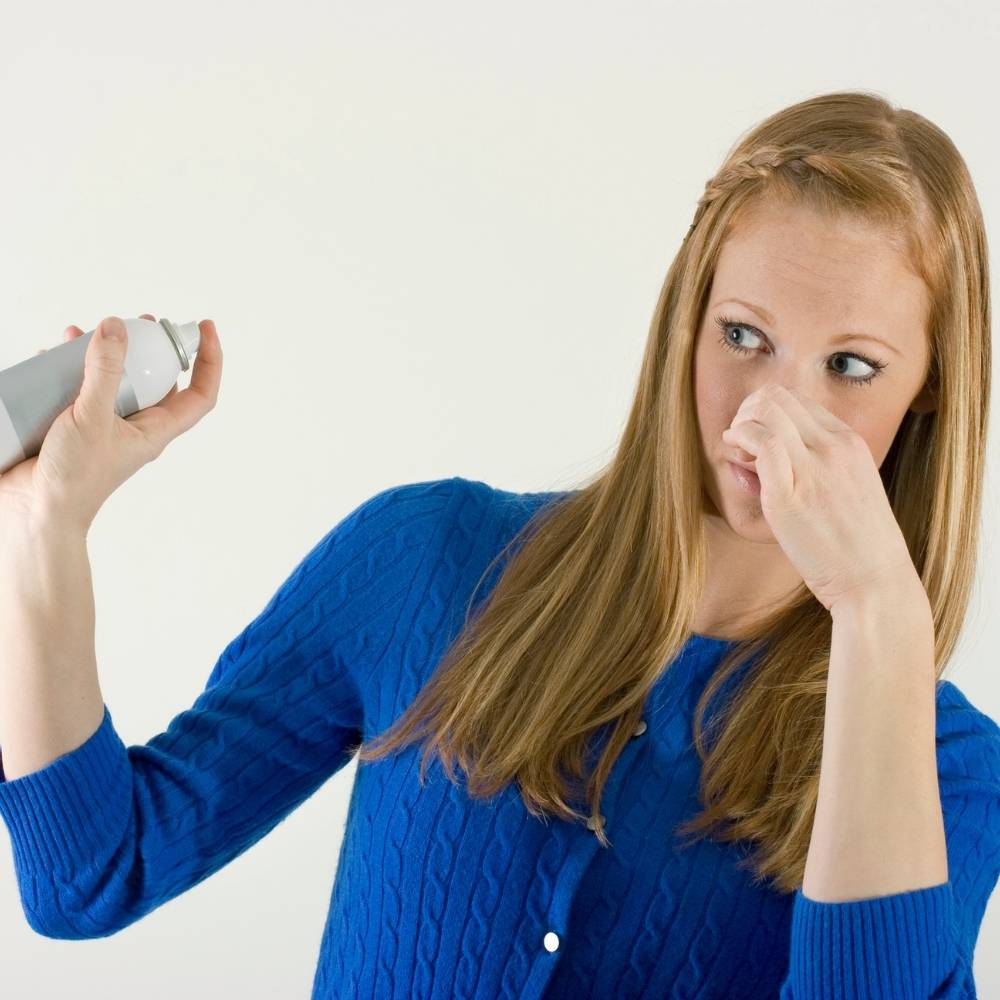
If you smell something that seems musty, you might have the beginning stages of a mold problem.
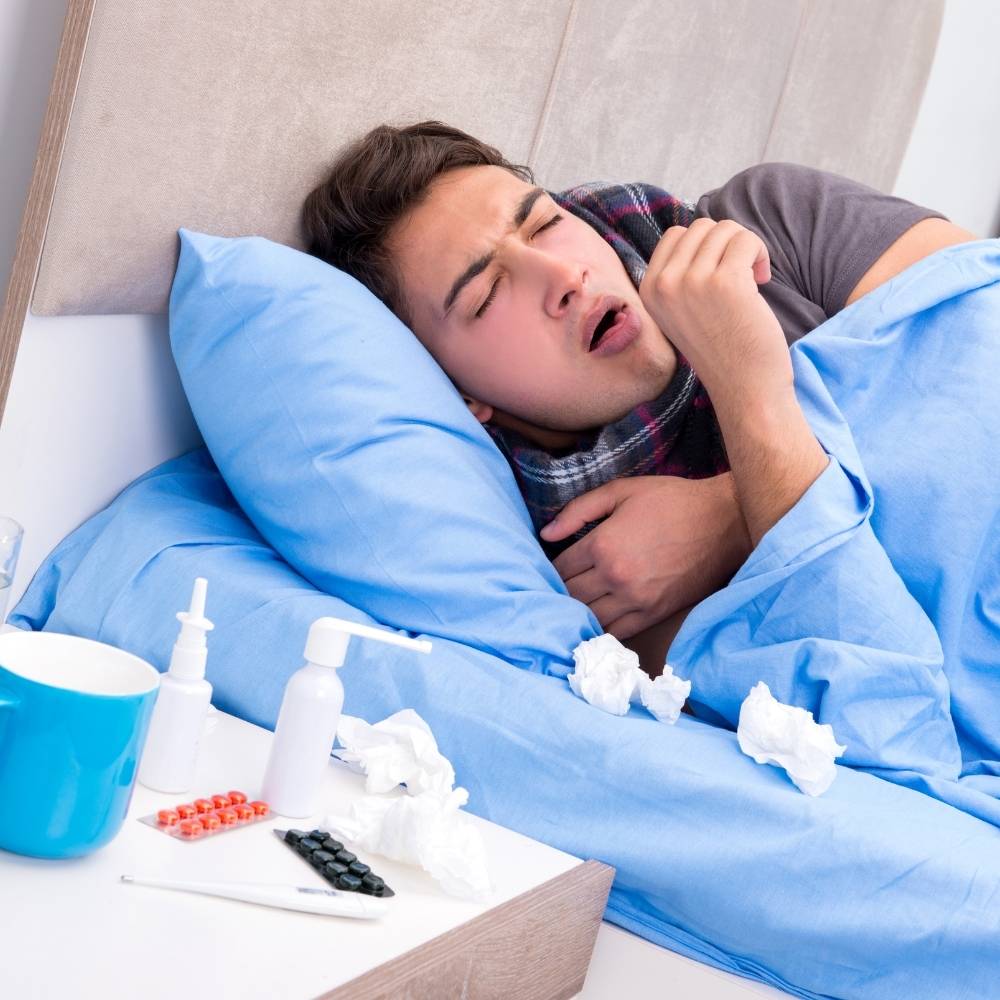
If you or someone else that frequently uses the bathroom in question doesn’t feel well, you might have a mold problem. Take note of how you feel when you avoid this bathroom for long periods.
Commonly, unhealthy mold levels don’t affect everyone in a household. People with respiratory issues (past or present) and suppressed or weakened immune systems are more susceptible to symptoms of mold exposure. Some of these symptoms include:
- Headaches
- Stuffy or runny nose
- Sore, dry throat
- Dry cough
- Wheezing
- Watery, red, and/or itchy eyes
If you experience any of these symptoms at home and don’t experience them outside or in other places – this might suggest that your house is infested with mold.
Visit your doctor but remember, just like for a fish in a dirty fishbowl, the treatment will not help unless you properly address the problem in your home.

How to Get Rid of Mold in the Bathroom?
First, be sure there are no leaks and that adequate ventilation is in place and proper use.
Second, remember that visible mold is a strong sign of a possible airborne mold problem that can quickly spread throughout your home and can cause health problems.
The best way to check for unhealthy airborne mold levels is with air quality testing.
If the problem isn’t major, you can do simple DIY cleaning with effective and natural products. Here are the three ways to kill black mold in bathroom:
- Vinegar
- Hydrogen peroxide
- Tea Tree Oil
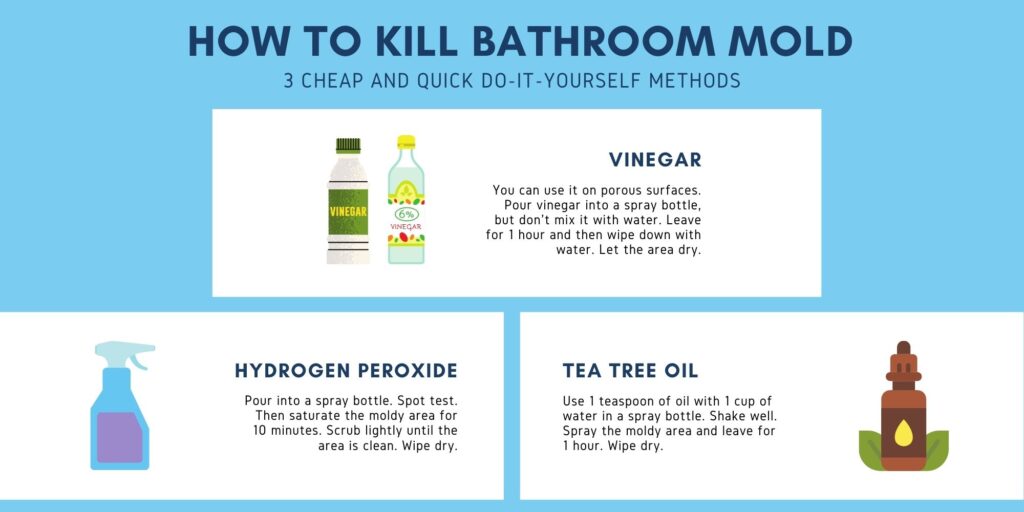
While cleaning with bleach is very common, it’s not recommended for mold, as it doesn’t effectively kill it. More often than not, bleach removes the appearance of mold by making it transparent while at the same time aggravating the mold, causing it to “spore out” and making the problem worse.
We will never be tired of repeating this: be very careful when cleaning surfaces inside the bathroom as they can cause mold to “spore out.”
Why Does Mold Keep Growing in My Bathroom?
After spending hours cleaning surface mold from a bathroom, its quick return is the last thing we want to see.
Often it does return, and one wonders if they didn’t scrub long enough or use the right cleaning product. Some get to a point where they believe the only solution is to tear out the surface that appears to be cursed (or, at least, causing you to curse ;) ).
Our clients frequently ask why mold cleaned from a surface returns. The answer typically is one or both of these items:
- The bathroom still has leaks, or it doesn’t get adequate ventilation
- DIY cleaning caused mold to “spore out,” and when the spores land on a surface, it starts growing again
How to Prevent Bathroom Mold from Growing?
How does the old saying go? “An ounce of prevention is worth a pound of cure” or something like that. Knowing how to prevent mold growth is more important than knowing how to remediate or remove it.
We want to share with you methods that will drastically decrease the chances of mold growth in your bathrooms and your entire home. Here are the five recommendations to prevent mold from growing or to keep it from coming back after removal:
Humidity levels. Because mold grows in humid areas, keep your humidity levels between 30% and 50%. You can monitor humidity levels with an inexpensive humidity gauge. If needed, you can reduce humidity levels with a reputable dehumidifier. We suggest dehumidifiers made by hOmeLabs for the following three size areas: 1,500 sq.ft. dehumidifier, 3,000 sq.ft. dehumidifier, 4,500 sq.ft. dehumidifier.
hOmeLabs Energy Star



Powerful dehumidifier that will help you keep the excess moisture out of your home:
1,500 sq. ft
3,000 sq.ft
4,500 sq. ft
Ventilation. Turn on the exhaust fan every time you shower or bathe and leave it on for 30 minutes to 1 hour after you finish. It is not a bad idea to install a timer switch to help with this.
Install an exhaust fan if you don’t have one, and invest in a quality unit capable of handling the air volume of your bathroom. Here’s a reputable exhaust fan to help get you started – Air King BFQ140 120-150 sq.ft. If you have a bathroom window – open it during and/or after using the bathroom.
Air King BFQ140



Exhaust fan that is strong enough to keep water vapor out of your bathroom:
Maintain Rugs and Curtains. Mold growth often starts on rugs, curtains, and other similar bathroom items. Be sure these items are regularly cleaned and possibly replaced after extensive use. Choose curtains made with mold-resistant fabric and rugs with minimum cellulose content.
LiBa PEVA 8G



Forget about mold on your shower curtain with this mildew-resistant liner!
No Lingering Water. Did water drip on the floor while you were getting out of the shower or while you were drying your hair? Put that towel to use and wipe it up. If you’re more particular, use a squeegee and/or a towel to dry surfaces and corners where water lingers after showering or bathing.
Regular Inspection. Leaks often start slow and unexpectedly. Get into a habit of regularly inspecting key areas under the sink, behind the toilet, where the toilet seals, and under the shower and bath plumbing.
Do You Know Others with This Problem?
Now that you’re a bathroom mold expert… or close to it, it’s time to share your knowledge with friends who may need it.
[DISPLAY_ULTIMATE_SOCIAL_ICONS]
